Northern Suburbs Branch, 21 May 2025
Jeremy Wilson is the newly appointed Curator of Arachnids and Myriapods at the WA Museum. Jeremy started his presentation by showing a slide of the three groups in the order Araneae.
The suborder Opisthothelae comprises two families: the Araneomorphae, which have more advanced spinnerets, eyes, and breathing apparatus, and the Mygalomorphae, which are more sedentary and have large, parallel fangs. Mygalomorphs include Trapdoor Spiders, Funnel Webs and Tarantulas.
Jeremy’s recent work examined the evolution of mygalomorphs and whether burrowing behaviour and the related morphology contribute to the evolution of trapdoor spiders.
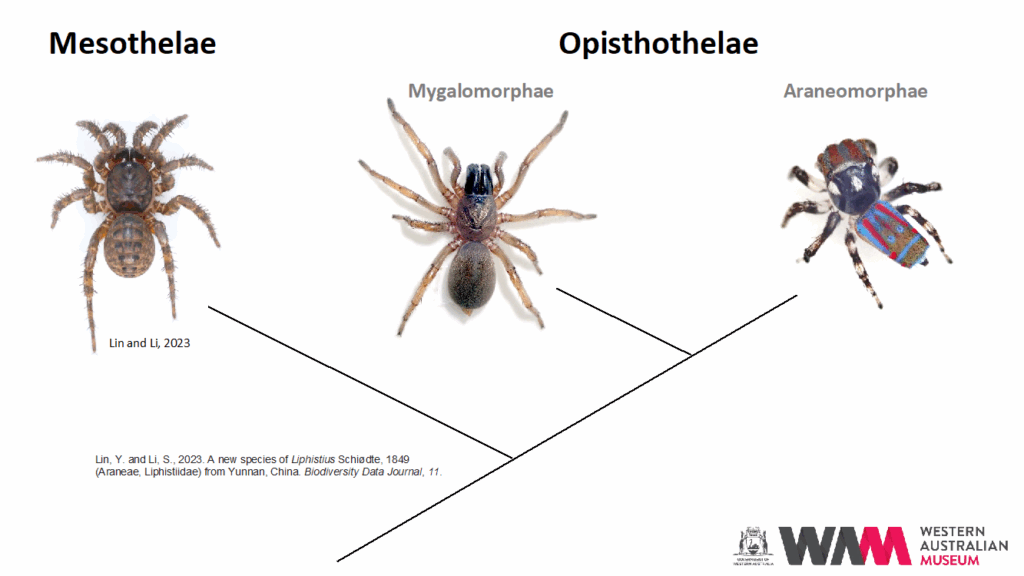
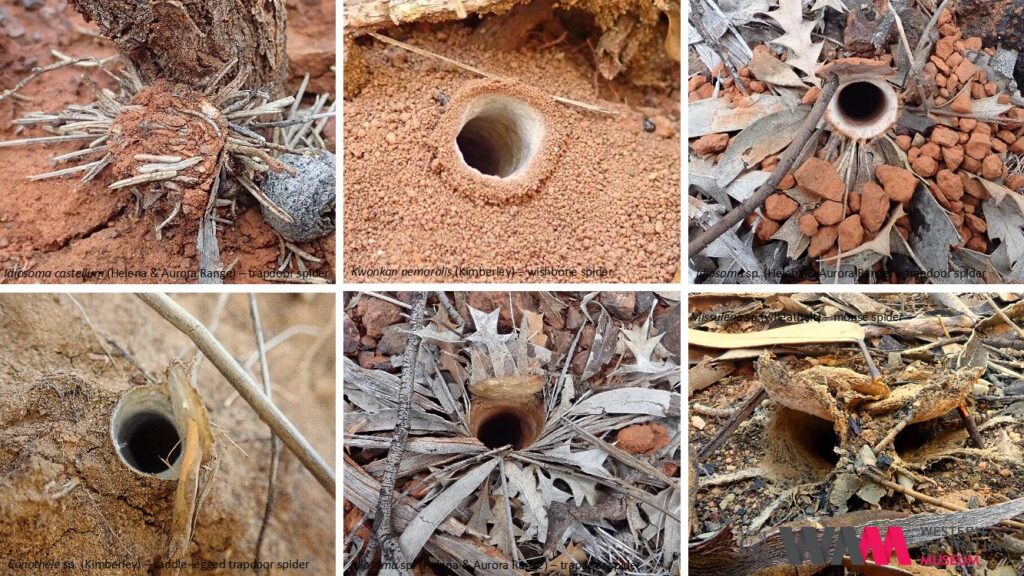
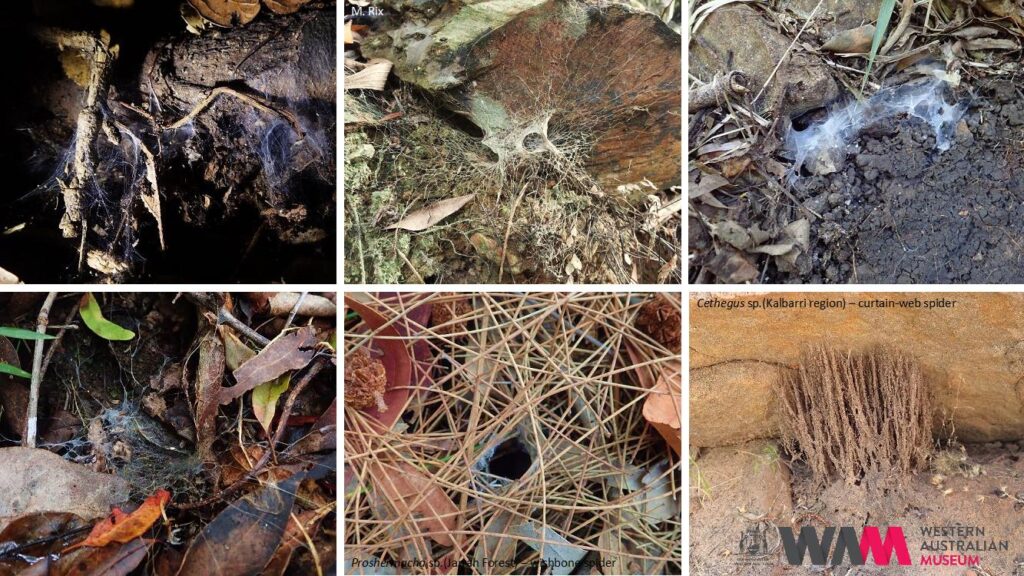
The type of nest made by mygalomorphs varies from the typical trapdoor burrow we are familiar with to more ‘opportunist’ retreats, where the spider inhabits an existing space under a rock or log and lines this area with silk. The evolutionary tree originally published was based on physical characteristics. However, now we have DNA evidence, which seems to have scattered the groups in the tree.
Jeremy undertook a comprehensive study of all published data sets and phylogenies based on molecular data, matched them to data on morphology and behaviour, and then examined actual specimens. This involved reviewing more than 200 taxonomic papers on the morphological characteristics and behaviours of various types of mygalomorph spiders.
He found that the ‘opportunist’ retreat was the ancestral type and that the ability to dig a burrow directly into the soil has evolved many times. In fact, virtually all different types of retreats made by mygalomorph spiders have evolved multiple times, and transitions are common. It also seems that burrowing behaviour is responsible for what a spider looks like more than its evolutionary history. This means that closely related species can look very different if they have evolved to make different burrow types, whereas spiders that make the same type of burrow generally look very similar, even if they are not closely related.
There are trade-offs between making more opportunistic retreats and making proper burrows. Proper burrows mean that the spider has a smaller foraging area but more protection from the environment and predators, as well as a stable microhabitat.
Jeremy then presented some information on five types of mygalomorph spiders found in the Perth surroundings.
- Actinopodidae – e.g. Missulena or Mouse Spiders.
They have two burrow entrances with trapdoors, and brightly coloured males can be found wandering during the day to find females (in other groups, the males wander at night). - Anamidae – e.g. Aname, Proshermacha or Wishbone Spiders.
Build open-holed burrows that sometimes have a secondary entrance/escape chute. - Barychelidae – e.g. Synothele, Idiommata or Brush-footed Trapdoor Spiders.
- Euagridae – e.g. Cethegus or Curtain-web Spiders are ‘opportunists’ that make messy curtain webs under rocks and logs or at the base of shrubs and grass.
- Idiopidae – e.g. Euoplos, Idiosoma or Armoured Trapdoor Spiders. Have silk-lined burrows with trapdoors and sometimes with radiating twigs at the surface.
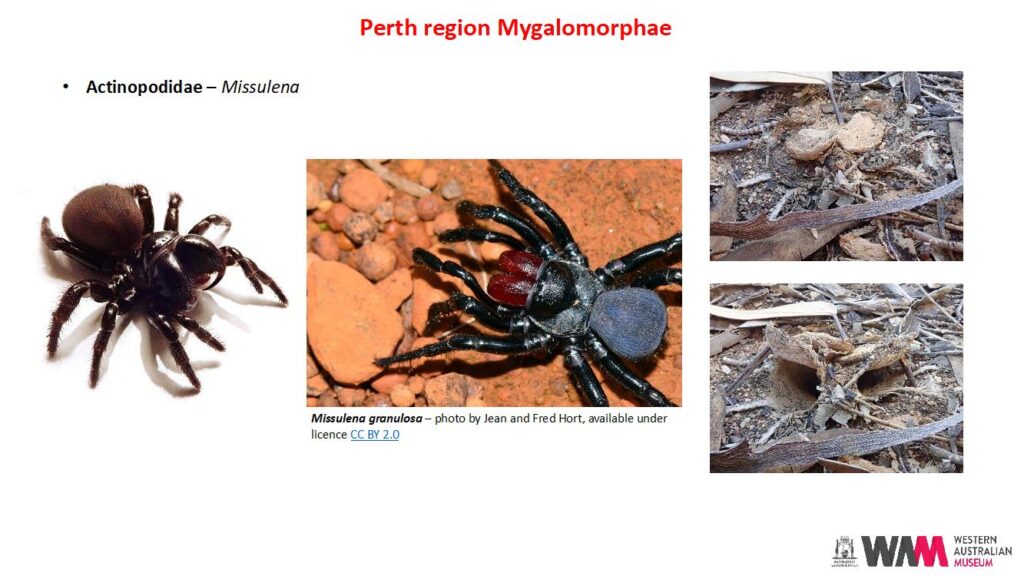
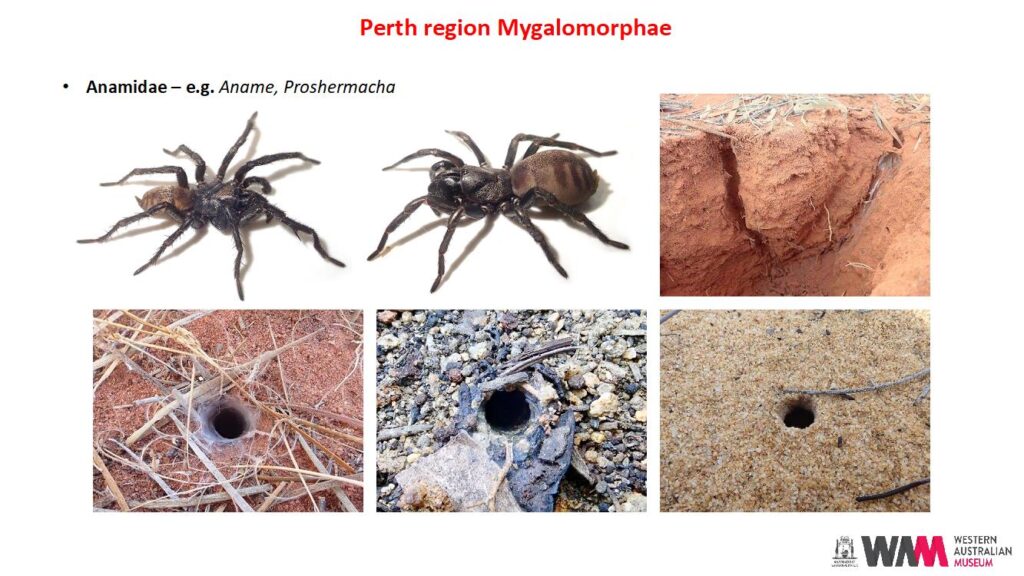
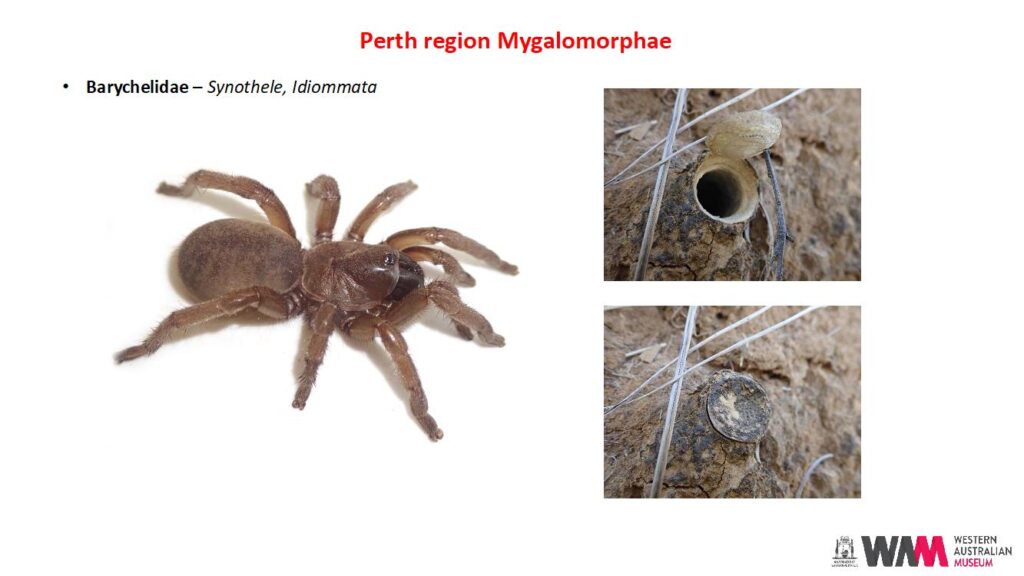
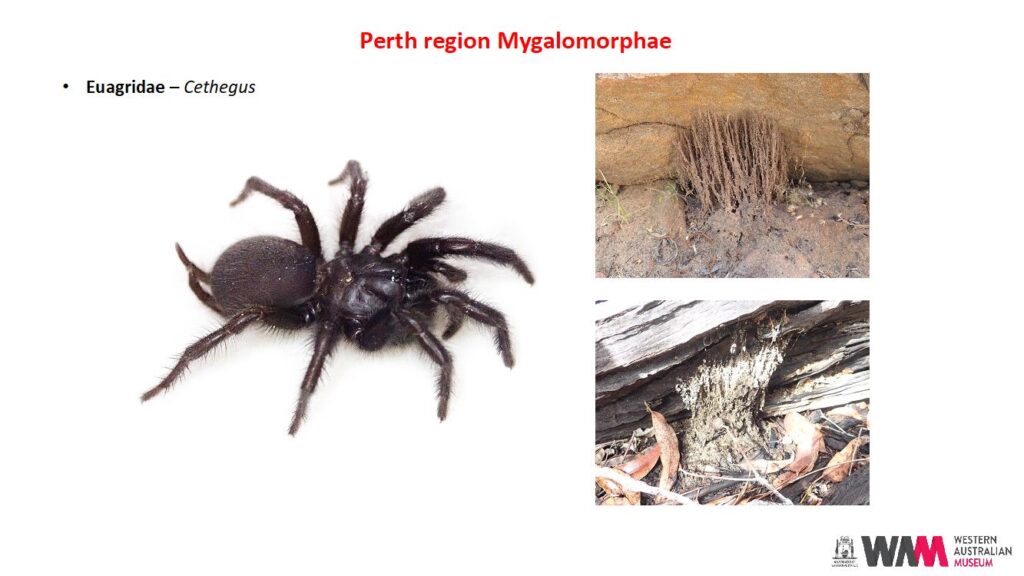
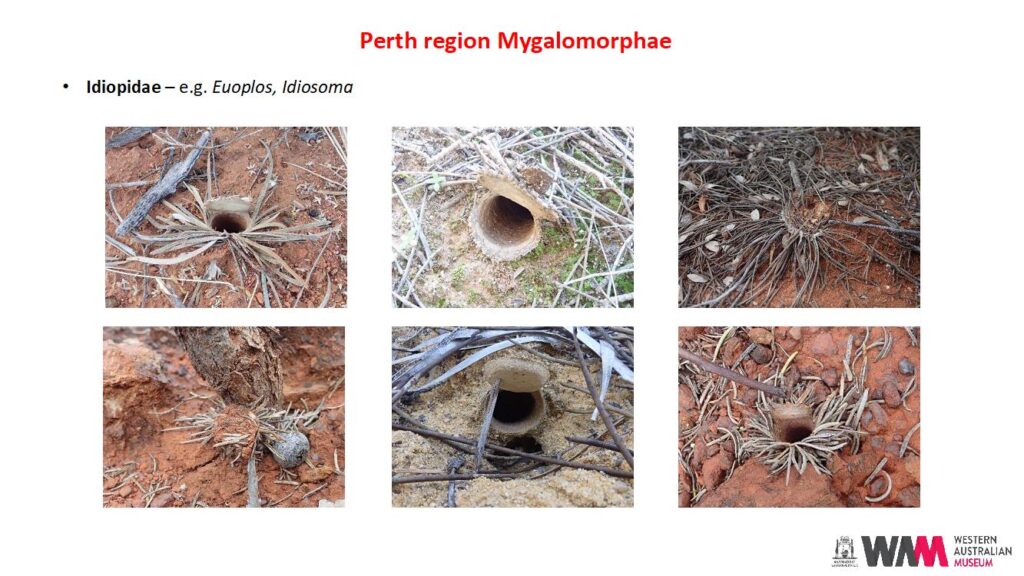
A wild female trapdoor spider from this family that lived in North Bungulla Reserve near Tamin was estimated to have lived 43 years and was studied by Barbara York Main under the name Number 16.
Don Poynton

